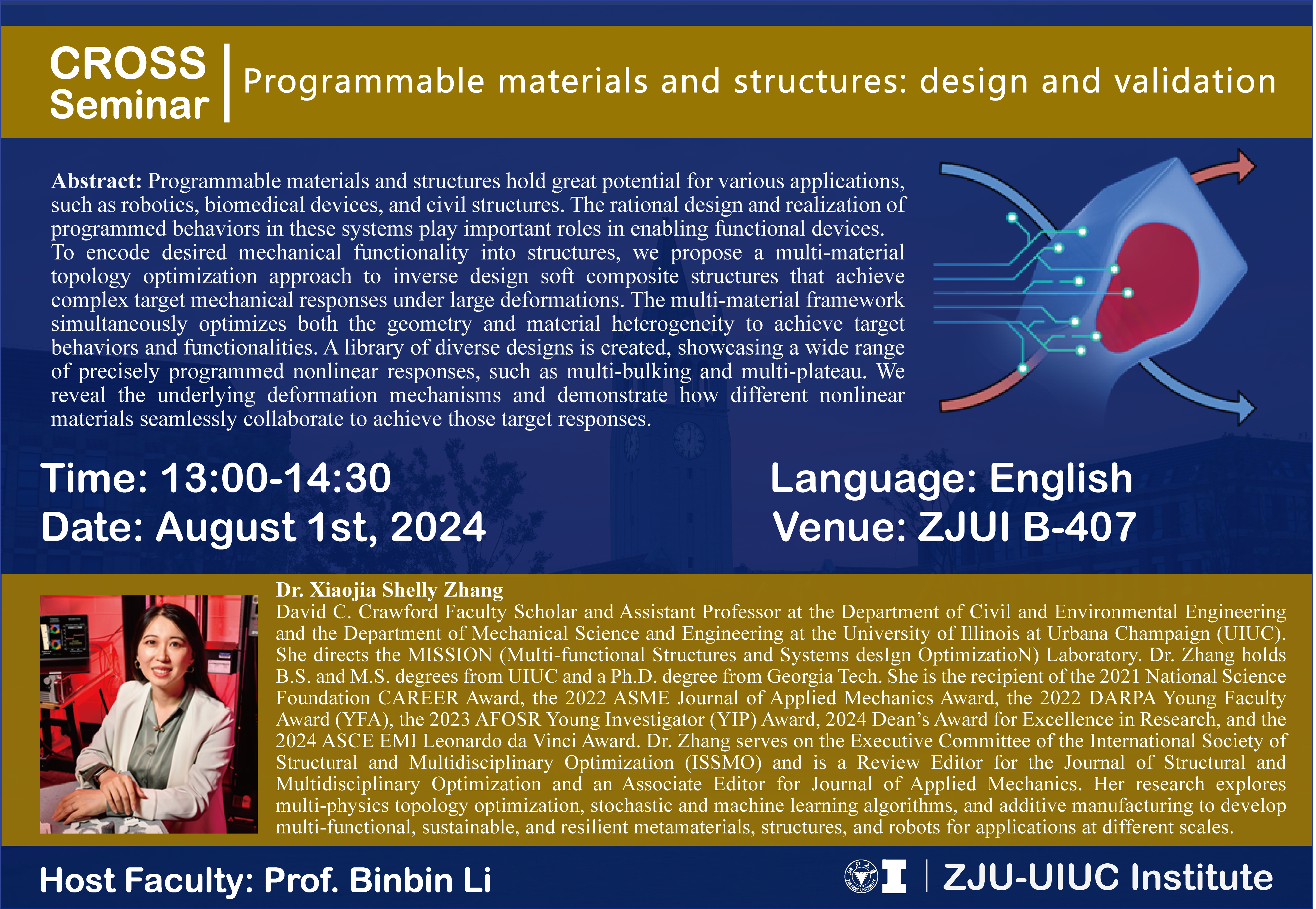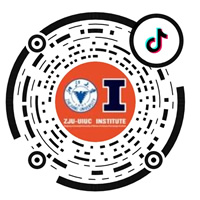Time:2024/08/01 13:00-14:30
Location:ZJUI B407

Programmable materials and structures: design and validation
X. Shelly Zhang
David C. Crawford Faculty Scholar and Assistant Professor
Department of Civil and Environmental Engineering (CEE)
Department of Mechanical Science and Engineering (MechSE)
University of Illinois at Urbana-Champaign
Abstract: Programmable materials and structures hold great potential for various applications, such as robotics, biomedical devices, and civil structures. The rational design and realization of programmed behaviors in these systems play important roles in enabling functional devices.
To encode desired mechanical functionality into structures, we propose a multi-material topology optimization approach to inverse design soft composite structures that achieve complex target mechanical responses under large deformations. The multi-material framework simultaneously optimizes both the geometry and material heterogeneity to achieve target behaviors and functionalities. A library of diverse designs is created, showcasing a wide range of precisely programmed nonlinear responses, such as multi-bulking and multi-plateau. We reveal the underlying deformation mechanisms and demonstrate how different nonlinear materials seamlessly collaborate to achieve those target responses.
In general, the properties of materials and structures typically remain fixed after being constructed. To enable reprogrammable behaviors, we develop a multi-physics topology optimization approach to discover magneto-active and temperature-active materials that achieve tunable buckling and switchable shape morphing, controlled by magnetic fields and temperature fields, respectively. The obtained magnetic systems exhibit one response under mechanical loading and switch to a distinct response by applying magnetic fields.
We explore multi-material manufacturing techniques to fabricate a suite of mechanical, magnetic, and thermal metamaterials and metastructures and experimentally validate their programmed behaviors. These complex yet programmable responses are enabled by the interactions among unique geometry, material nonlinearity, large deformations, and external stimuli actuation. The excellent agreement among target, simulation, and experiment demonstrates that the proposed optimization-driven framework, when integrated with hybrid manufacturing techniques, has the potential to systematically design, inform, and create innovative multi-functional materials and structures for various engineering applications.
Bio: Dr. Xiaojia Shelly Zhang is a David C. Crawford Faculty Scholar and Assistant Professor at the Department of Civil and Environmental Engineering and the Department of Mechanical Science and Engineering at the University of Illinois at Urbana Champaign (UIUC). She directs the MISSION (MuIti-functional Structures and Systems desIgn OptimizatioN) Laboratory. Dr. Zhang holds B.S. and M.S. degrees from UIUC and a Ph.D. degree from Georgia Tech. She is the recipient of the 2021 National Science Foundation CAREER Award, the 2022 ASME Journal of Applied Mechanics Award, the 2022 DARPA Young Faculty Award (YFA), the 2023 AFOSR Young Investigator (YIP) Award, 2024 Dean’s Award for Excellence in Research, and the 2024 ASCE EMI Leonardo da Vinci Award.
Dr. Zhang serves on the Executive Committee of the International Society of Structural and Multidisciplinary Optimization (ISSMO) and is a Review Editor for the Journal of Structural and Multidisciplinary Optimization and an Associate Editor for Journal of Applied Mechanics. Her research explores multi-physics topology optimization, stochastic and machine learning algorithms, and additive manufacturing to develop multi-functional, sustainable, and resilient metamaterials, structures, and robots for applications at different scales.







